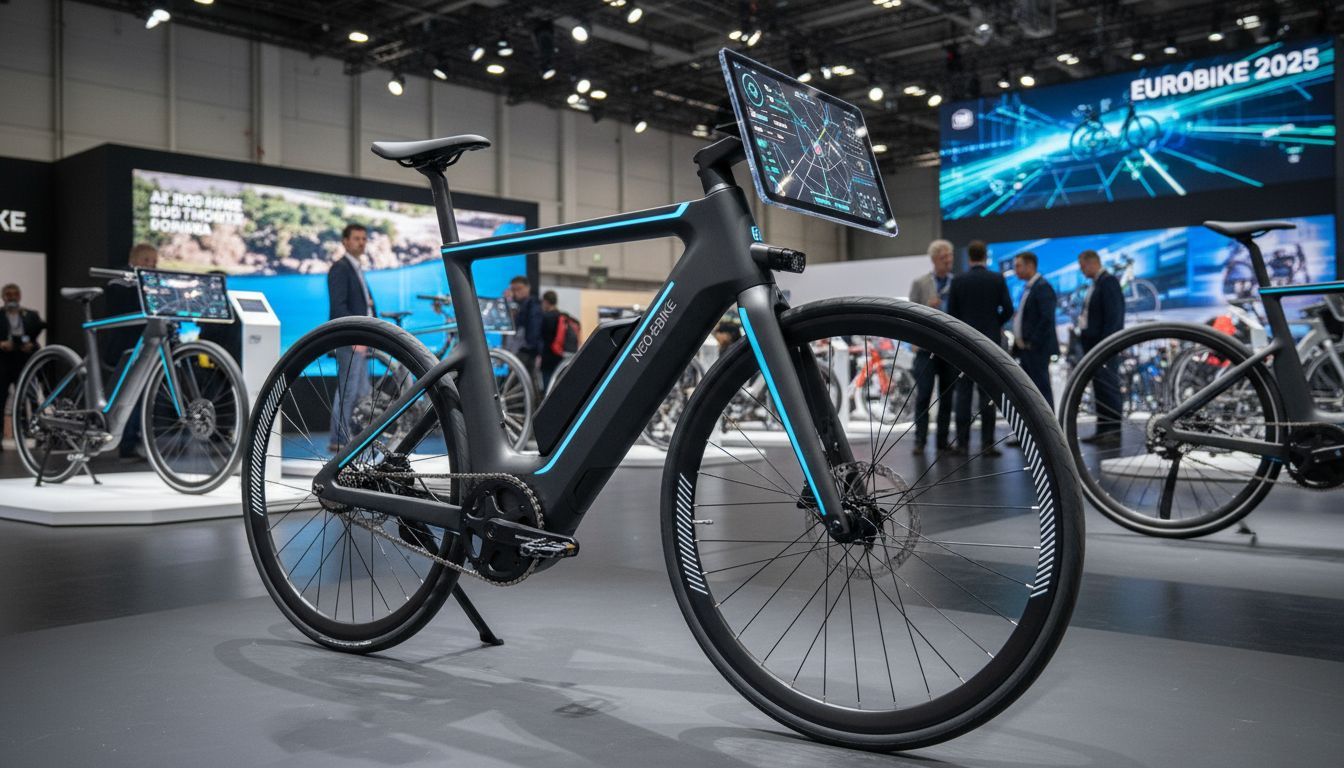
A Shifting Landscape: The Cycling Industry in 2025
The cycling industry in 2025 is a dynamic and rapidly evolving landscape, shaped by technological advancements, shifting consumer preferences, and growing environmental awareness. Gone are the days when cycling was simply a recreational activity. It's now a multifaceted industry encompassing transportation, fitness, leisure, and even competitive sports. This article delves into the key trends defining the cycling market in 2025 and identifies the major players leading the charge.
E-bikes Dominate: The Electric Revolution Continues
The e-bike revolution, which began in earnest several years ago, is now fully realized. E-bikes represent the largest and fastest-growing segment of the cycling market. What was once considered a niche product for older riders or those living in hilly areas is now mainstream. Consumers are embracing e-bikes for commuting, recreation, and even cargo transport. The technology has matured significantly, with longer battery ranges, lighter motors, and more sophisticated control systems. Leading e-bike manufacturers are no longer just bicycle companies; they are technology companies integrating software, connectivity, and advanced materials into their products. 
Sustainability Takes Center Stage: Eco-Friendly Cycling
Environmental consciousness is a major driver of consumer behavior in 2025, and the cycling industry is responding. Sustainable manufacturing practices, recycled materials, and eco-friendly components are no longer just marketing buzzwords; they are essential for attracting environmentally aware customers. Companies are investing in research and development to create bicycles and accessories with a lower carbon footprint. This includes using recycled aluminum and carbon fiber, exploring bio-based materials for tires and other components, and reducing waste in the manufacturing process. Brands that prioritize sustainability, such as Bamboocycles (known for their bamboo frames) and companies actively participating in circular economy initiatives, are gaining a competitive advantage. Furthermore, the growing demand for bicycle sharing programs and subscription services reflects a broader trend towards sustainable transportation solutions. 
Smart Cycling: Connectivity and Data-Driven Performance
The integration of technology into cycling continues to accelerate. Smart bikes, equipped with sensors, GPS, and connectivity features, are becoming increasingly common. These bikes collect data on rider performance, environmental conditions, and even maintenance needs. This data can be used to optimize training, improve safety, and enhance the overall riding experience. Cycling computers, such as those from Garmin and Wahoo, are now sophisticated platforms that offer navigation, performance tracking, and connectivity to other devices and services. Apps like Strava and Komoot continue to be central to the cycling ecosystem, providing social networking, route planning, and performance analysis tools. The next frontier is predictive maintenance, where sensors and algorithms can identify potential mechanical issues before they occur, reducing downtime and improving safety. This also extends to personalized recommendations based on rider data, suggesting optimal gear ratios, tire pressures, and training schedules.
Key Players and Market Leaders
While the overall market is expanding and becoming more fragmented, several key players continue to dominate the cycling industry in 2025.
Established Giants: Trek, Specialized, Giant
These established brands remain major forces in the market, leveraging their global reach, extensive product lines, and strong brand recognition. They have adapted to the changing landscape by investing heavily in e-bikes, sustainable manufacturing, and smart technology. Trek's focus on innovation and performance, Specialized's emphasis on rider experience and community, and Giant's manufacturing expertise and value proposition continue to resonate with consumers worldwide. These companies are also actively acquiring smaller brands and investing in startups to expand their product portfolios and stay ahead of the curve.
Emerging Disruptors: VanMoof, Cowboy, Canyon
These direct-to-consumer brands have disrupted the traditional cycling market by offering stylish, technologically advanced bikes at competitive prices. VanMoof and Cowboy, in particular, have focused on urban e-bikes with integrated features and sleek designs. Canyon, known for its high-performance road and mountain bikes, has successfully leveraged its direct-to-consumer model to offer exceptional value. These companies are challenging the established players by appealing to a new generation of cyclists who prioritize style, technology, and convenience. Their success demonstrates the growing importance of online sales channels and direct relationships with consumers.
Component Suppliers: Shimano, SRAM, Bosch
These companies remain critical players in the cycling industry, providing essential components such as drivetrains, brakes, and motors. Shimano and SRAM continue to be the dominant suppliers of drivetrain and braking systems, while Bosch is the leading provider of e-bike motors and battery systems. Their innovations in component technology are driving the overall performance and functionality of bicycles. As the industry evolves, these companies are also expanding their offerings to include integrated systems and connectivity features.
Challenges and Opportunities
The cycling industry in 2025 faces several challenges and opportunities.
Supply Chain Disruptions: A Persistent Issue
Supply chain disruptions, which have plagued the industry in recent years, continue to be a concern. The availability of components, raw materials, and manufacturing capacity remains constrained, leading to longer lead times and higher prices. Companies are adapting by diversifying their supply chains, investing in local manufacturing, and building stronger relationships with suppliers.
Infrastructure and Safety: Promoting Cycling-Friendly Cities
The growth of cycling depends on the availability of safe and convenient cycling infrastructure. Cities around the world are investing in bike lanes, protected intersections, and bike parking facilities to encourage cycling as a mode of transportation. However, more needs to be done to create cycling-friendly environments that prioritize safety and accessibility.
Data Privacy and Security: Protecting Rider Information
As bicycles become more connected and data-driven, concerns about data privacy and security are growing. Companies need to implement robust measures to protect rider information from unauthorized access and misuse. Transparency about data collection practices and user control over data sharing are essential for building trust with consumers.
Conclusion
The cycling industry in 2025 is a vibrant and dynamic market driven by technological innovation, sustainability concerns, and evolving consumer preferences. E-bikes are dominating the market, while sustainability and smart technology are becoming increasingly important. Established giants like Trek, Specialized, and Giant continue to lead the way, but emerging disruptors are challenging their dominance. Overcoming supply chain challenges, promoting cycling-friendly infrastructure, and protecting data privacy will be crucial for the continued growth and success of the industry.


